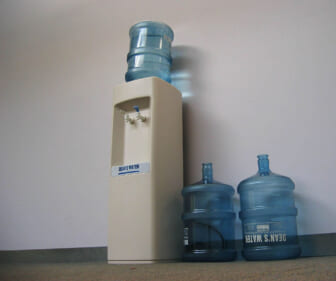What Are the Germiest Public Places?

Think back to all the places you visit in a week: stores, restaurants, work, your child’s school, etc.
How many germs do you think are lurking there? Did you clean your hands afterward?
You might not want to think about it, but public areas are a breeding ground for bacteria and illness. And the ickiness might be hiding in areas you don’t usually think about.
7 Diseases You Can Get from Your Pet
It’s Bad News for Hand Dryers
According to one study published in the Journal of Hospital Infection, one of those spots is the bathroom’s hand dryer. To compare the effects of hand dryers, the study’s researchers started by coating people’s hands in harmless bacteria called lactobacilli.
These bacteria are not usually found in public restrooms.
Then, those people used either a jet dryer, warm air dryer or paper towels to dry their hands. Researchers tested the air a total of 120 times and even used paint in some of the tests to make the air dispersal more obvious.
They found that those who used a jet dryer dispersed bacteria 4 times more than those using a warm hand dryer. By comparison, researchers also found 27 times more bacteria around the jet dryer than the paper towel dispenser.
That’s bad news for air dryer companies and their healthy, green environment fans. However, now you know to skip the usual air dry and opt for a paper towel instead.
5 Warning Signs You Might Have Bed Bugs
Public Restrooms
You could’ve probably guessed that public restrooms are among the most bacteria-populated areas. But one group of researchers decided to find out exactly how populated and with what kinds of bacteria—a scary thought if you consider the possibilities.
To start, the researchers thoroughly cleaned several men’s and women’s restrooms. They then took samples after several hours, days, and months into the study.
What did they find? Thousands of bacteria, including one strain that continued to live on hours after anyone had entered the restroom.
Although not often found in its most menacing forms, Staphylococcus was that hardy bacteria. They did find the antibiotic-resistant version of S. aureus (MRSA) on the floor, however.
The study was published in 2014 in the journal Applied and Environmental Microbiology.
While not all bacteria are bad, these can raise some concerns about illness caused by certain harmful strains found in public restrooms.
Into The Germy Unknown
You might try to avoid obvious germ-laden areas. But what about the lesser-known spots that no one thinks about? Here are a few:
Airplanes
This lid-tight area is the perfect place to pass and pick up germs. With your seat buddy squeezed right up against your shoulder and nowhere to go, you’re at the mercy of the next guy’s hygiene and the airline’s cleaning lady.
According to Time, there are a number of grimy places you should avoid on these flights. For starters, try wiping down your seatbelt and window before you touch them with your fingers. And don’t even think about eating food that’s touched your tray table.
Restaurants
You’d think the places where you eat should be the cleanest of them all. Think again.
Today reporters asked microbiologist Dr. Charles Gerba from the University of Arizona about restaurant germs. A few spots he mentioned to clean: high chairs and your ordering menu.
Seriously, how many times have you seen someone wipe those down?
City Buses
Last, imagine the number of people that have probably touched the handle before you on a city bus. That could mean a lot of bacteria.
A few researchers tested public transportation in several cities to find out. According to Today, many of the big cities’ transportation systems held bacteria at hundreds of points above the recommended amount, including city buses.
Coffee May Decrease Stroke Risk
Conclusion
The problem with these studies and tests in public places is that they are pre-pandemic. During the pandemic lockdowns curbed transmission, but now people are back to normal in many places, are people actually more conscientious of germ transmission?
When you’re dealing with bacteria, a germ problem can quickly spiral. Even more, other worse illnesses could be transmitted through close contact, surrounding air and dirty surfaces.
While people don’t exactly need the slate wiped clean of all bacteria, could companies be following the example set during lockdowns? Or will they skimp on cleaning staff just to improve profit?

What’s Lurking In The Water Cooler?
